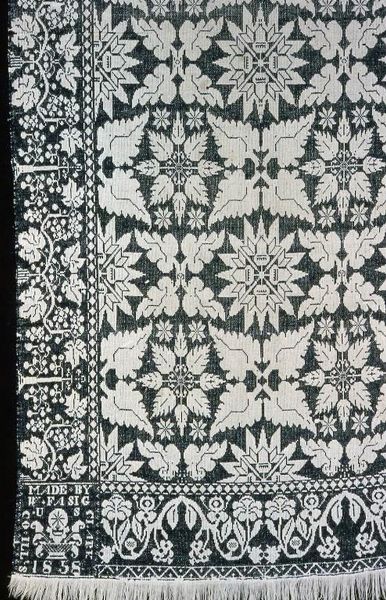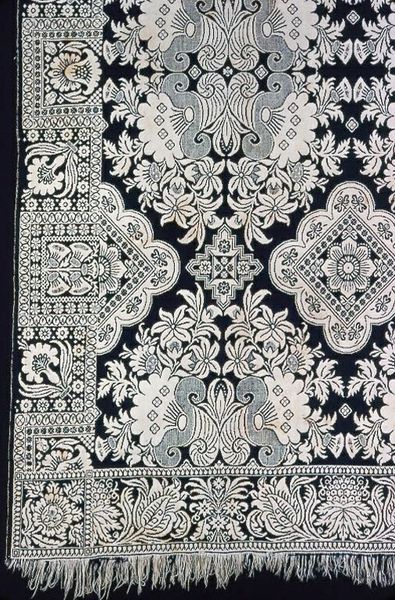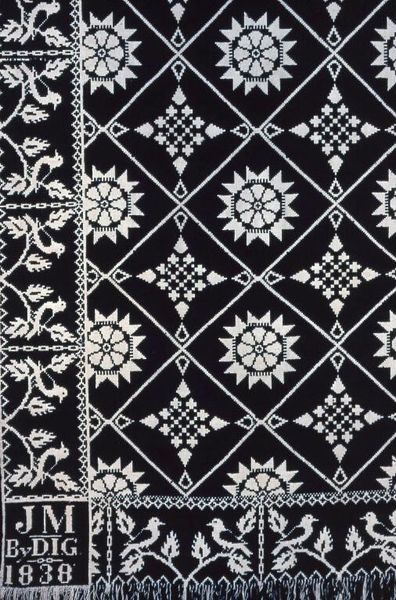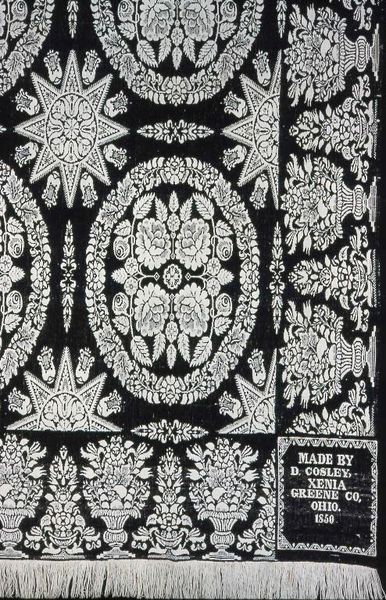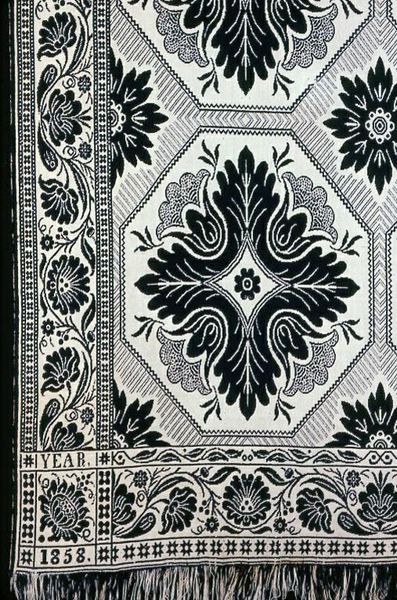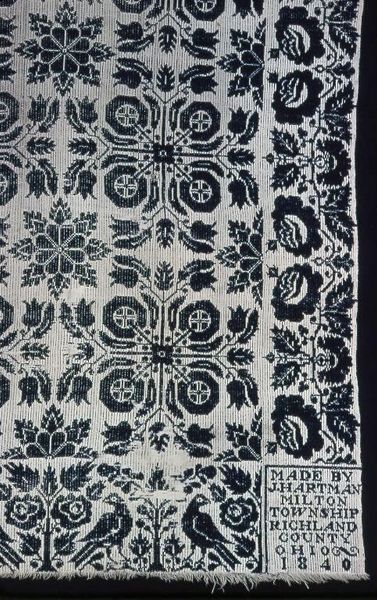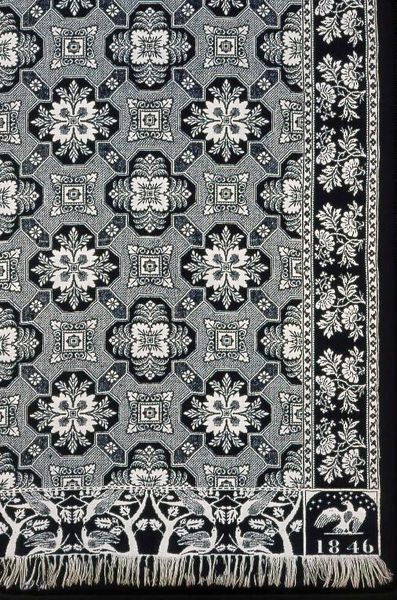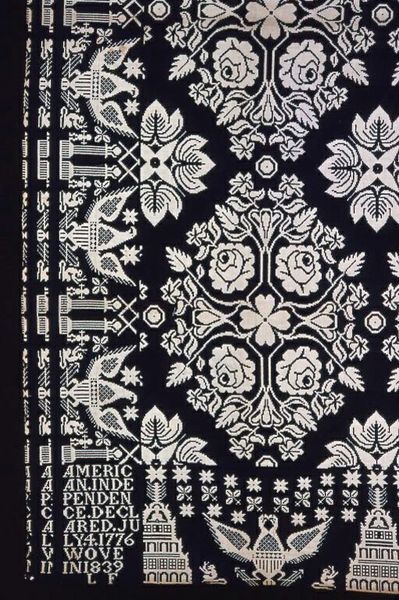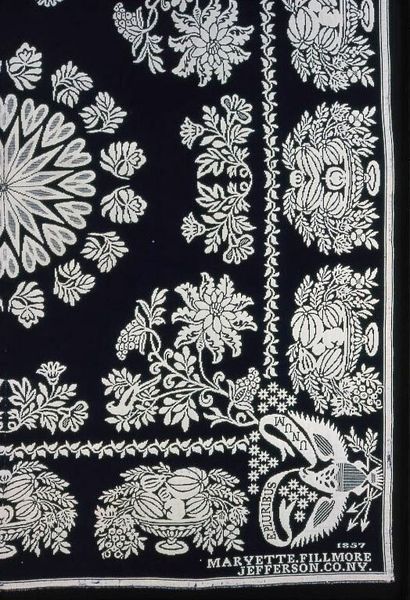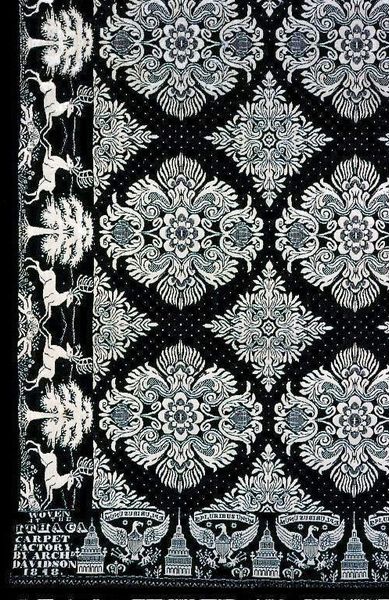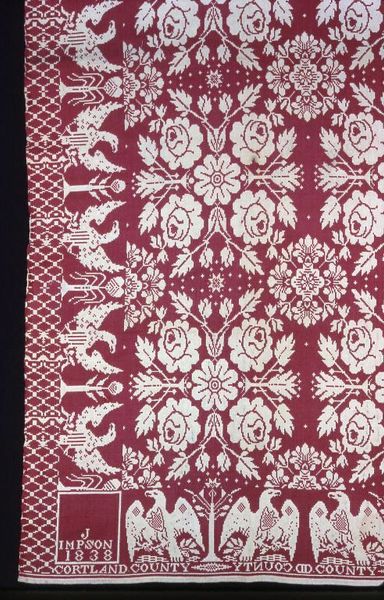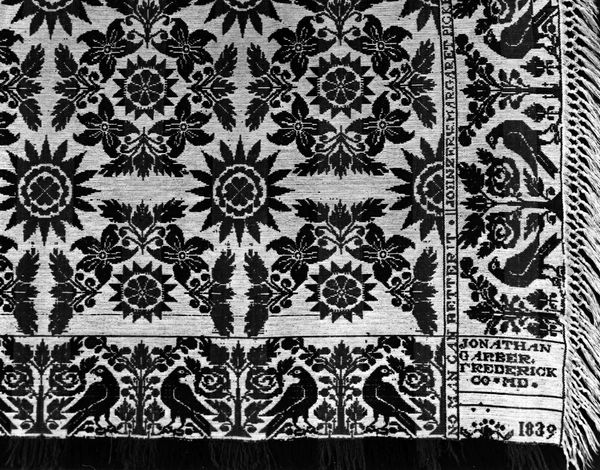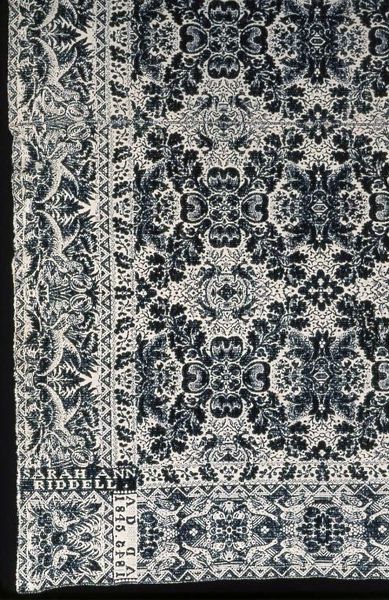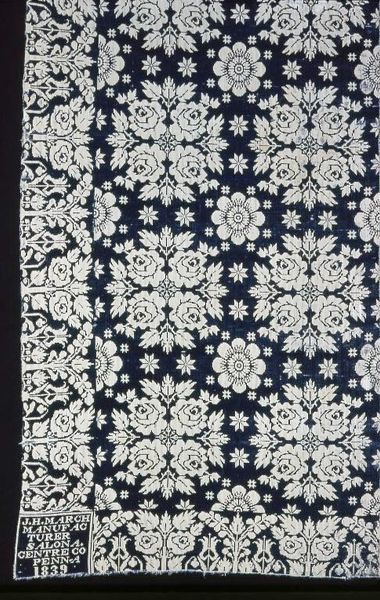
weaving, textile, cotton
#
weaving
#
textile
#
folk-art
#
geometric
#
cotton
Dimensions: 215.5 × 204 cm (84 3/4 × 80 1/4 in.) Repeat: 42 × 41.5 cm (16 3/4 × 16 1/4 in.)
Copyright: Public Domain
Editor: Here we have Jacob Impson's woven "Coverlet" from 1842, now residing here at the Art Institute of Chicago. The textile patterns create this overall sense of… order. Stately even? What do you see when you look at this piece? Curator: Order is a great word. But within that seemingly rigid framework, I see echoes of life, echoes of personal story and history woven right into the threads. See how the geometric and floral motifs intertwine? The almost hypnotic repetition draws you in. It speaks to the rhythms of life on the frontier and in Cortland County, of its time, but the maker also had very specific ideas about this weaving. Notice the Eagles flanking the central design, symbols of a fledgling American experiment? Editor: Right, the Eagles, very patriotic. The repetition…it almost feels comforting in a way, the predictability of it all. Curator: Comforting, yes! And crucial. The coverlet offered physical warmth, of course. But it also acted as a visual text, layered with cultural and personal meanings. Something that must have been deeply cherished, especially given the sheer effort of weaving such a piece, by hand, in 1842! What are the messages that the artist wove into it, do you think? Editor: Maybe messages about family, home, security? That's beautiful to consider! I'd initially overlooked that, focusing purely on the repeating geometric structure, but your points make it far more personal. Curator: Exactly! A piece of woven code, a personal and cultural history speaking silently across generations. A quiet conversation between then and now.
Comments
No comments
Be the first to comment and join the conversation on the ultimate creative platform.
